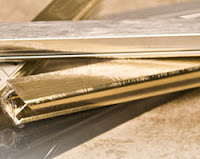
Today’s Image
Our Family's "Mystery" Painting
Photo Copyright 2009
I thought I’d close out the last OrbisPlanis art blog of 2009 with a mystery. I hope you like mysteries.
I thought I’d close out the last OrbisPlanis art blog of 2009 with a mystery. I hope you like mysteries.
In my last blog I talked about several paintings that I remembered fondly from my grandmother’s home.
Today’s Image is another painting originally from her home that has been in the family for at least 50 years, maybe more.
Funny, we never named this painting like we did the ones I mentioned in my last blog (Blue Boy, Pink Lady, etc.), and I don’t know why. It certainly deserves a name.
It also deserves a past, and that’s what the mystery is. Who was the artist who painted this, and where did it come from?
The painting has a few hints that I can share, although they only partially answer the above questions.
In the lower left corner of the painting, there is a signature. It’s “T Harris” --I'm pretty sure that’s what it is. After the signature is “52” which I’m sure is the year in which it was painted. Now, I’m assuming that's 1952. It’s unlikely from its condition, but I suppose it’s possible that it could be a very well preserved painting from 1852 (or older?). Also, it's oil on stretched canvas (I think, but it's been framed and you can't see the back). It's 15.5 x 19.5 in (39.4 x 49.5 cm).
The painting was a gift from an elderly neighbor friend of my grandmother’s in Houston during the 1950s. I only know the neighbor as “Mrs. Downey” who was originally from Calgary, Alberta, Canada. She had moved in with her daughter and son-in-law in Houston, Kay Newton and Dr. Bern Newton. I do not know if Kay’s maiden name was Downey or not.
I Googled several search words, of course, such as " T Harris, painter, artist, Houston, Calgary," but there were no hits remotely associated with the artist or painting.
And that, folks, is the extent of my knowledge of this painting. It has hung in various houses and various rooms at various times in which our family has possessed it.
If anyone has a clue to its origin, feel free to leave a comment or email me.
If it turns out to be a masterpiece by a famous, famous painter of whom I’m unaware, wouldn't that be a great way to start 2010!?
Cheers and Happy New Year!





















